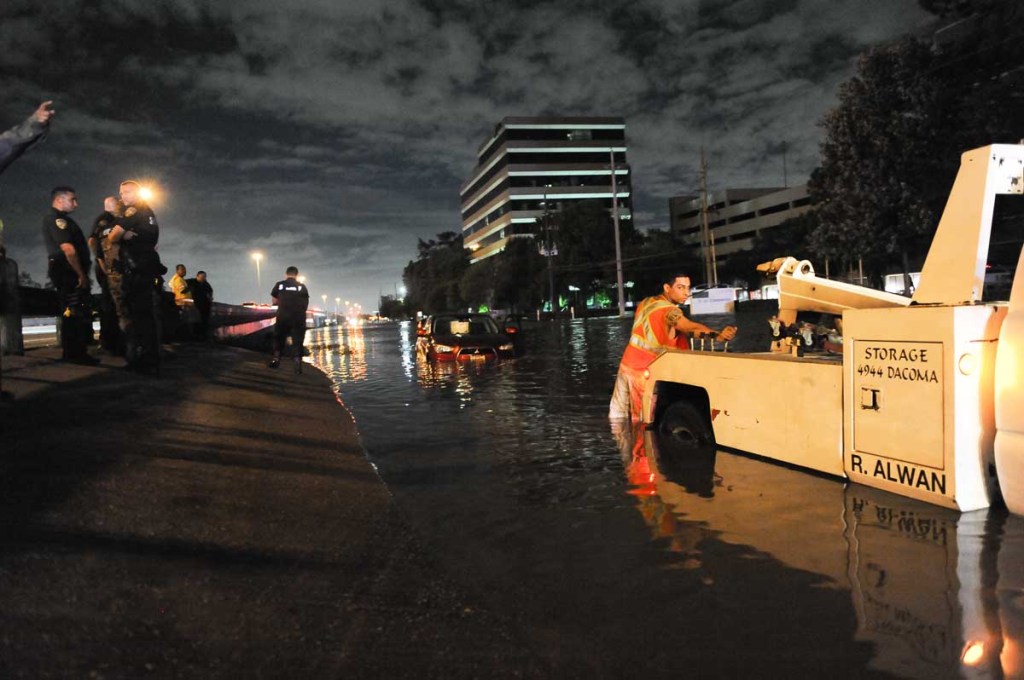Lack of flood insurance leaves Texans high and dry
Published 4:39 pm Wednesday, September 20, 2017

- A tow driver pulls a car out of flood waters on a feeder road on State Highway 249, Tuesday, Aug. 30, 2017, after Hurricane Harvey hit the Houston area.
AUSTIN — Insurance may have covered only 25 to 45 percent of Houston houses flooded by Tropical Storm Harvey, but that’s not because it wasn’t available to homeowners
Trending
The National Flood Insurance Program, or NFIP, a part of the Federal Emergency Management Agency, underwrites most coverage and actually requires property owners to buy insurance in many cases.
Still, that ignorance of flood-insurance rules is one reason that Harvey has left a whopping tab for uninsured residential costs in the wake of a total loss estimated at $25 to $37 billion, according to CoreLogic, an analytics company.
“About 40 percent of people believe homeowner insurance covers flood damage,” Robert W. Klein, director of Georgia State University’s Center for Risk Management and Insurance Research, said in a telephone interview. “That is not the case.”
However, a host of other factors contributed to the uninsured loss from Harvey besides ignorance on the part of those who mistakenly believed they were covered, and they remain unresolved. Urban expansion is one.
“From what I understand, a lot of these people had never seen their neighborhood flooded,” Klein said. “Expansion continues to change and for many people it continues to increase.”
Flood insurance is required for almost all mortgaged houses in high-risk, 100-year flood zones.
Trending
But it’s not mandatory for un-mortgaged houses or those not in high-risk flood zones.
Economist Lloyd Dixon, director of the RAND Center for Catastrophic Risk Management and Compensation, reported in a recent blog post that “two-thirds to three-quarters of homes with mortgages in high-risk areas have flood insurance.”
But, Dixon wrote, “only 20 to 30 percent of homes without mortgages in high-risk flood zones carry flood insurance. Homes outside the high-risk flood zone have even lower participation rates, often only in the single digits.”
CoreLogic estimated that some 1.2 million Houston-Sugarland-Baytown-area properties are at high/moderate risk of flooding, but lie outside a designated flood zone mandating coverage.
As for knowing whether you’re in a flood zone, the public can access information, but Klein said people may not know how to find it.
And, Klein said, the information “is often outdated … before FEMA comes back and changes it.”
There are also pocketbook issues.
The Associated Press reported that based on FEMA data, flood-insurance rates in Harris County, which contains Houston, rose 8 percent from 2012 to 2017.
Dixon in a recent RAND blog post also noted that “some people think that they have flood insurance when they do not.”
For example, when researching New York City, he “found that 16 percent of homeowners who thought they had flood insurance actually did not — and that is in an area that recently experienced massive flooding,” Dixon wrote in his blog post.
Dixon advocates increasing the number of homeowners with flood coverage.
“The most effective strategy would be to extend the mandatory purchase requirement, perhaps expanding the requirement to all homes in the high-risk flood zones, regardless of mortgage,” he wrote in the RAND blog. “Policymakers could also consider extending the mandatory purchase requirement to the 500-year flood zone, perhaps with a lower requirement on the amount of coverage that needs to be purchased.”
As Dixon said in a telephone interview, “a low number of people are going to buy it unless they have to.”
He also advocates investing the time and money it takes to create accurate flood maps, an acute need as sea levels rise, coastal lands subside and real-estate development continues.
That could be problematic, as Klein pointed out in a recent report published in The Conversation.
“Unfortunately, the White House isn’t helping,” Klein wrote. “Trump’s proposed budget would cut NFIP spending on flood mapping by $190 million.
“In August, shortly before Harvey made landfall, he rescinded an Obama-era executive order to establish a federal flood risk management standard for public infrastructure.”
Both Dixon and Klein detailed suggestions to address other shortcomings with the NFIP’s status quo.
But both emphasized the importance of providing accurate information on flood risks.
“When you buy a house you should be looking at what the map is going to be in 30 to 50 years,” Dixon said.
Austin covers the Texas Statehouse for CNHI’s newspapers and websites. Reach him at jaustin@cnhi.com.




